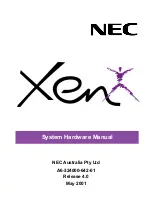
DX80 Quick Start Guide
P/N 128185
Banner Engineering Corp.
•
Minneapolis, MN U.S.A.
www.bannerengineering.com • Tel: 763.544.3164
8
GETTING STARTED – HOST NETWORK
Host Network – Gateway
Installing a host-connected network is similar to installing a standard DX80 wireless system, except that all device I/O for the Gateway
and each Node can be accessed by a Modbus RTU Master device via serial RS485. (See pages 4-6 for instruction to Apply Power, Verify
Communications, Conduct a Site Survey.) Follow this procedure if it is necessary to change the Gateway Slave ID, Baud Rate and Parity.
All steps (Power up, Site Survey, Applying Devices) are identical to the stand-alone system procedures, except that the Gateway has
no hard-wired inputs or outputs enabled or linked. Instead, all device I/O of the Gateway and each Node can be accessed by a Modbus
RTU Master device via serial RS485. In order to accomplish this, you may first need to configure several system-level communications
parameters on the DX80 Gateway (in addition to the serial hookups shown below).
1 = BROWN
2 = WHITE
3 = BLUE
4 = BLACK
5 = GREY
Brown
1
10-30V dc Input
White
2
RS 485 / D1 / B /+
Blue
3
Ground Input
Black
4
RS485 / D0 / A / -
Grey
5
Comms Gnd
Wiring:
5-pin Euro pinouts for 485+, 485- and
Comms ground
Parameter
Description
Slave ID (default = 1)
Defines the slave number (1) for the serial
Modbus RTU protocol.
Baud Rate (default = 19200)
Defines communication data rate (19.2, 38.4 or
9.6 kbps) between the Gateway and the Host
through the serial interface.
Parity (default = none)
Defines serial parity (none, even, or odd)
between Gateway and Host.






































